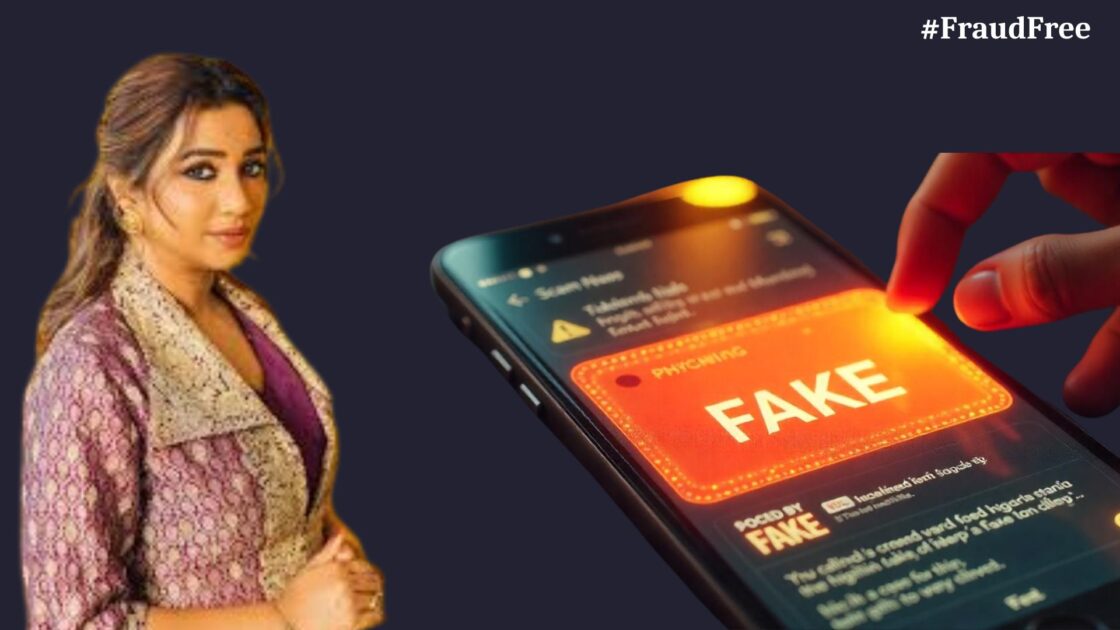“I think Shreya Ghoshal has been arrested!”
That message landed in my inbox at 2:13 AM, just as I was about to call it a night. Attached was a viral-looking image of Shreya, visibly upset, and a dramatic caption: “Too late to cry – what happened to Shreya?”
My first instinct? Click and find out. Rookie move.
How a Fake Scandal Became the Perfect Trap
Overnight, headlines like “She didn’t realize the microphone was on” and “Career destroyed in one move” were all over social media. The faces of Indian pop culture, even the most respected ones, weren’t safe from what came next.
But here’s the kicker – there was no controversy. No hot mic moment. No arrest. It was all fabricated. A web of lies built to exploit curiosity, celebrity fandom, and a few clicks.
Meet the Hacker Hunter Who Exposed the Truth
Anmol Sharma, a cyber intelligence analyst known for sniffing out online fraud, decided to dig in.
“It wasn’t a leak. It was a link,” he said, after following the trail.
These weren’t news sites. They were shady domains dressed up like Times Now or NDTV, with names like replaceyourselfupset.run. Designed to look official, built to steal your data.
One click would redirect you to sites with fake investment schemes, while another might quietly drop malware.
Some even had crypto scams promising massive returns through platforms that don’t even exist in government databases.
The Actors Were Real, But the Story Wasn’t
Shreya Ghoshal had absolutely nothing to do with this. But her image, her fame, and her trust with the public were used as bait.
Fake news tickers. AI-generated courtroom scenes. Even deepfake-style images of her “crying” circulated across WhatsApp forwards.
It was engineered to feel believable. Emotional. Urgent. And that’s exactly how scams work in 2025.
The Trap Wasn’t Technical, It Was Emotional
This wasn’t about breaching firewalls or decoding algorithms. It was about making people curious enough to click.
In one version of the phishing link, users were told to “watch the full clip” on a news site.
The video?
Never loads. Instead, your details are harvested, your phone possibly compromised, and your data sent god-knows-where.
That’s how cybercrime looks today. Less hacking. More acting.
“Yaar, I Almost Forwarded That Post…”
A couple of days later, I was on a call with Rohan, the friend who first sent me the screenshot.
“Yaar, I almost shared that post in my college group. Just stopped myself at the last second.”
“Why?” I asked.
“Because I remembered what you said – if the headline sounds like a movie script, it’s probably not real.”
He chuckled. I didn’t. Because he was almost a part of the problem.
Lessons We Should All Take From This
Let’s not pretend we’re immune. These scams are designed to hit where it hurts – emotions, reputations, and blind spots. But here’s what you can do:
- Don’t trust a story just because it uses a familiar face.
- Double-check the source URL. Is it a legitimate
.inor.com, or some suspicious.runor.momdomain? - Think before forwarding a sensational post. It takes two seconds to become part of a misinformation chain.
- Never, ever share personal info on a link you found through WhatsApp or Telegram without vetting it.
Behind every scandal that grabs your attention is often just a clever criminal hoping to grab your data.
Final Word
This wasn’t just a scam using Shreya Ghoshal’s face. It was a mirror to how easily we fall for viral drama. And unless we slow down, verify, and think before clicking, these scams will only get smarter.







